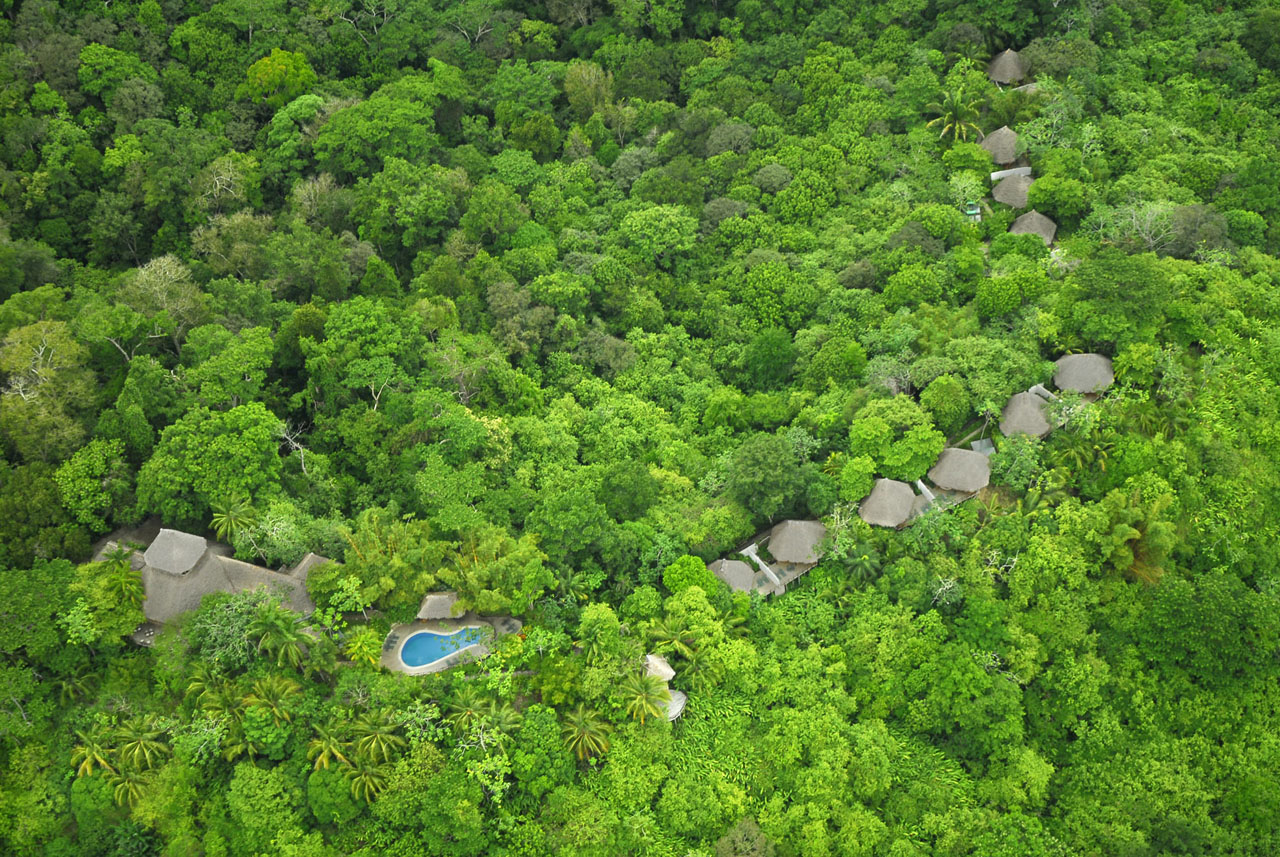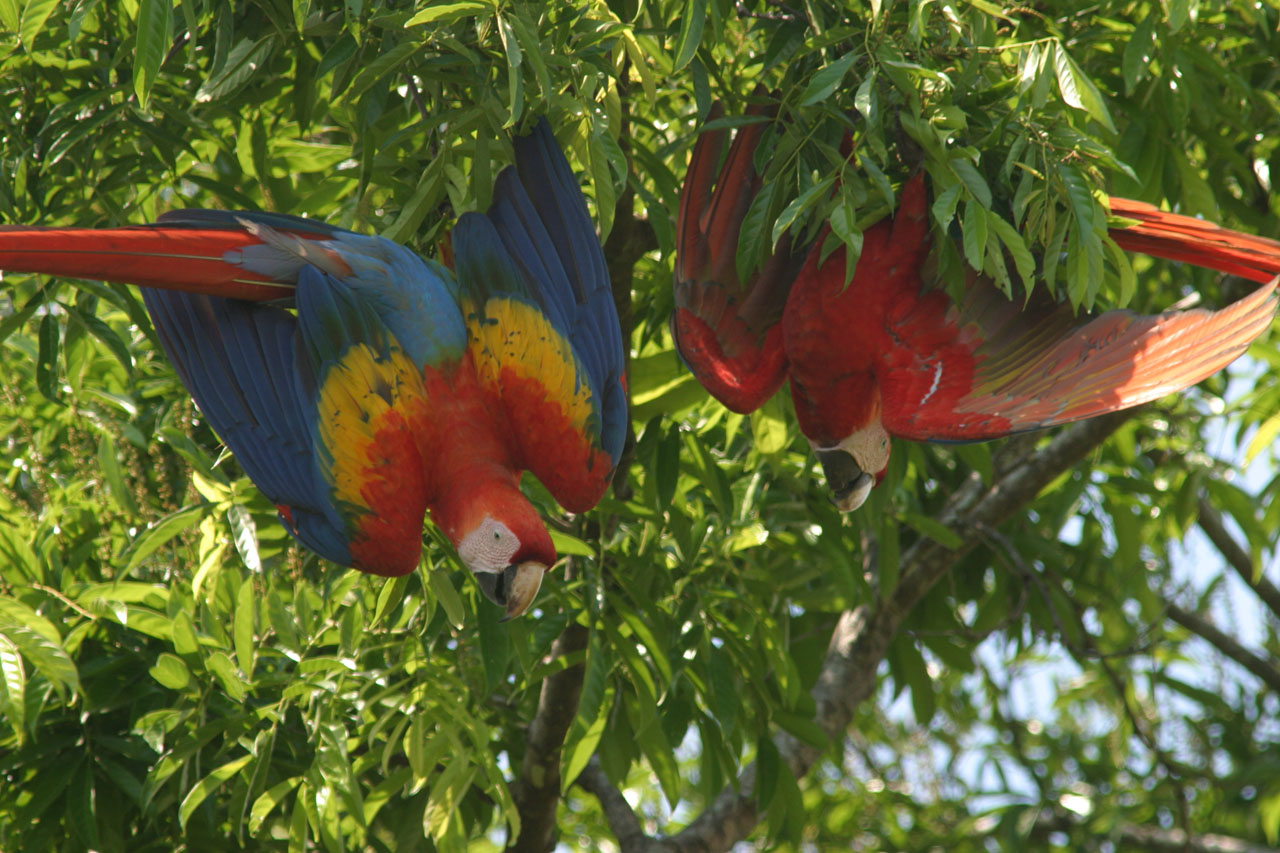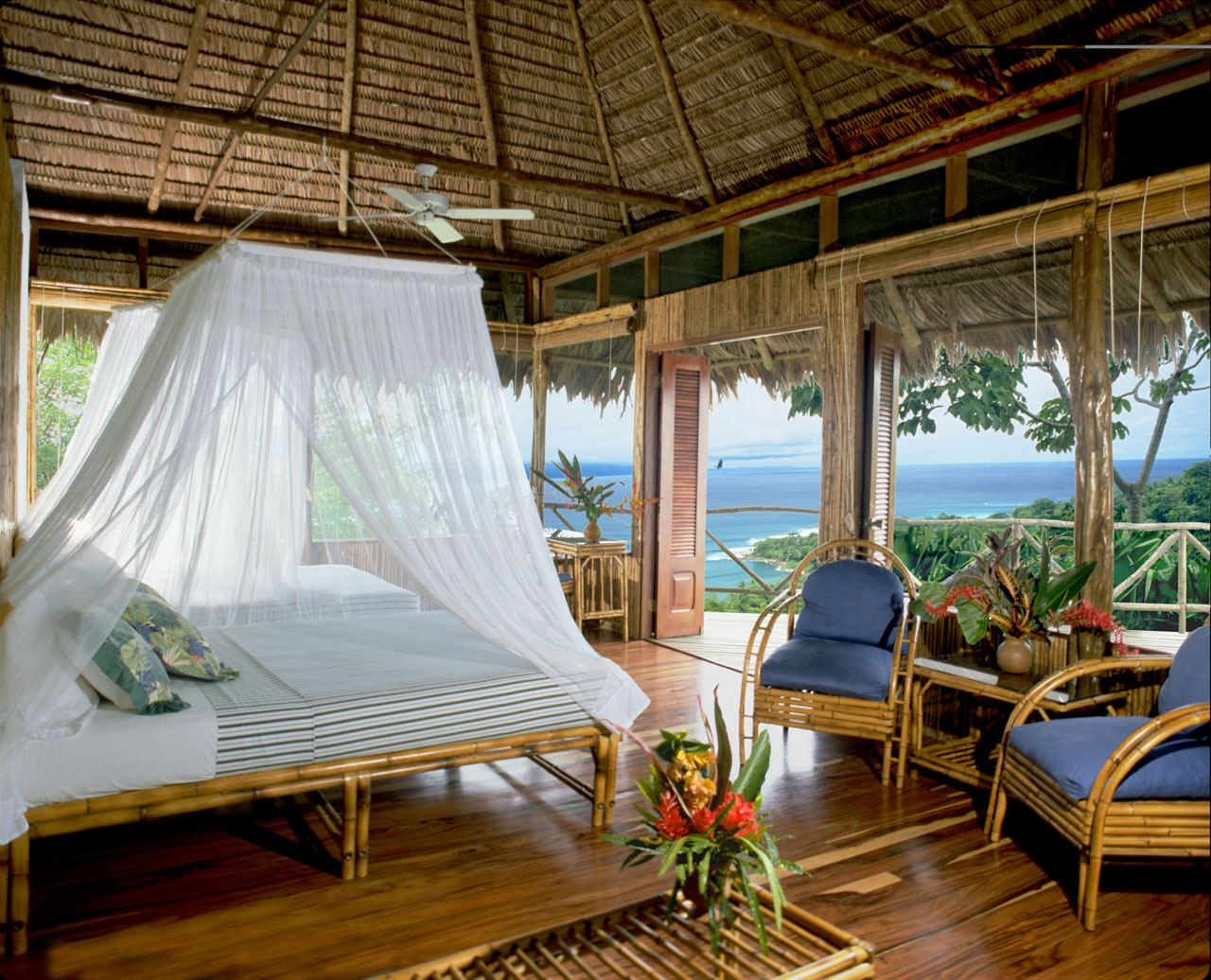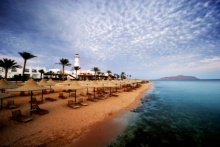Ecotourism at Lapa Rios: Costa Rica's Rainforest Ecolodge
Video
Imagine a place that could take you away from the stress of demanding deadlines. Lapa Rios Rainforest Ecolodge can offer that very experience. Located on the Osa Peninsula on the southwestern end of Costa Rica, Lapa Rios sits on a private nature reserve of more than 900 acres and overlooks the Golfo Dulce. This eco-tourism destination has garnered international attention and has won awards from several prominent publications such as National Geographic Traveler and Condé Nast Traveler. Multiple times it has won the Certification for Sustainable Tourism's (CST) Five Leaf Award – Costa Rica’s highest honor. Lapa Rios Rainforest Ecolodge marries the efforts of the resort, guests, and locals to promote sustainability and environmental awareness.
Comprising the resort are the main lodge, Brisa Azul restaurant, and 16 bungalows. Guests stay in the bungalows, which are hand built and have thatched roofs of local suiita palm. Outdoor showers allow guests to take in natural surroundings while washing off the mud from a vigorous hike or the saltwater from a swim in the gulf. Afterward, guests can nap in the hammock on the veranda wrapping around the bungalow. Because of Lapa Rios's location on the edge of the rainforest, guests can get up close and personal with the wildlife.

The main lodge, 350' above sea level, overlooks the Golfo Dulce. It too is built with local materials and celebrates local culture. Here, knowledgeable staff can recommend and set up tours for guests. Go for a relaxing swim in the secluded pool surrounded by tall tropical plants with an opening looking out at the gulf. Savor the deliciousness of local cuisine at the Brisa Azul restaurant.
Lapa Rios's Sustainable Practices
Sustainable practices of the hotel are meant to bolster the economy of the local community and conserve the rainforest. One of the tours offered at Lapa Rios, led by the sustainability coordinator, takes guests around the resort and teaches them about sustainability and conservation. Resort buildings were constructed by using local, biodegradable materials. Wood used for exterior decks and stairs comes from certified sustainable forests, and the interior is made of Gmelina wood from a local plantation. Natural materials also replace metal, plastic, and china utensils. For instance, soap dispensers are made of bamboo and bowls are made of coconut shells. Cuisine at Brisa Azul is locally grown and organic. Fish served at the resort are caught the same day in the gulf. Costa Rican fruits and vegetables include mango, passion fruit, guava, pejibaye (a type of date), and camote (white sweet potato).

Lapa Rios involves the local community. Forty-five local families are employed at the resort. Local culture is incorporated in the cuisine along with international flavors. Social and health education is not a strong suit of the local communities, so Lapa Rios organized a two-day DARE program, which teaches children about the dangers of drugs. The staff is encouraged to mingle with guests by participating in the activities. In turn, guests are taken on a tour to visit for a day of fun with children at the local Carbonera School.
Decreasing energy consumption and reducing their carbon footprint is important to Lapa Rios and they seek out alternative energy options for every aspect. Food scraps from staff and guests aren’t thrown out -– they’re fed to the pigs. Methane gas from the pig manure is then used to fuel the kitchen stove. Recycling is big at Lapa Rios. Not only does staff recycle, the guests are requested to do so as well. There is no air conditioning in the bungalows. The only place that has air conditioning in the entire resort is an insulated storeroom used to replace a walk-in refrigerator. Additionally, solar power is used to heat all the water and to provide daytime lighting needs. Data are being collected on unused diesel-generated energy. The plan is to capture, invert, and store the excess energy for use during the night, when minimum energy is needed. Another sustainable practice of Lapa Rios is visible in the erosion channels and retention walls, which are constructed with rocks, in lieu of rebar and concrete blocks.

The Osa Peninsula provides for plenty of outdoor recreation and wildlife. National Geographic Magazine named the Osa Peninsula “one of the most biologically intense places on Earth." In addition to the sustainable practices described above, visitors also have an opportunity to contribute to the sustainable development of the area through the Lapa Rios reforestation program -- primary seedlings are being transplanted to an area of second growth. Guest can also learn about the importance of recycling, solar planels, and environmental responsibility while participating in Lapa Rios's sustainability tour. Through continued education and community involvement Lapa Rios will continue to be a model for ecotourism

Carla D'Errico
An alumni of The Ohio State University, Ms. D'Errico obtained a degree in travel writing through a study program that she created herself. For two years Ms. D'Errico served as a staff writer for The Animal Insider, a quarterly publication based in Columbus, Ohio, and has also worked as a review scout for the Columbus division of Yelp.com. Now she is trying her hand at covering ecologically responsible and sustainable architecture for Buildipedia.com.


